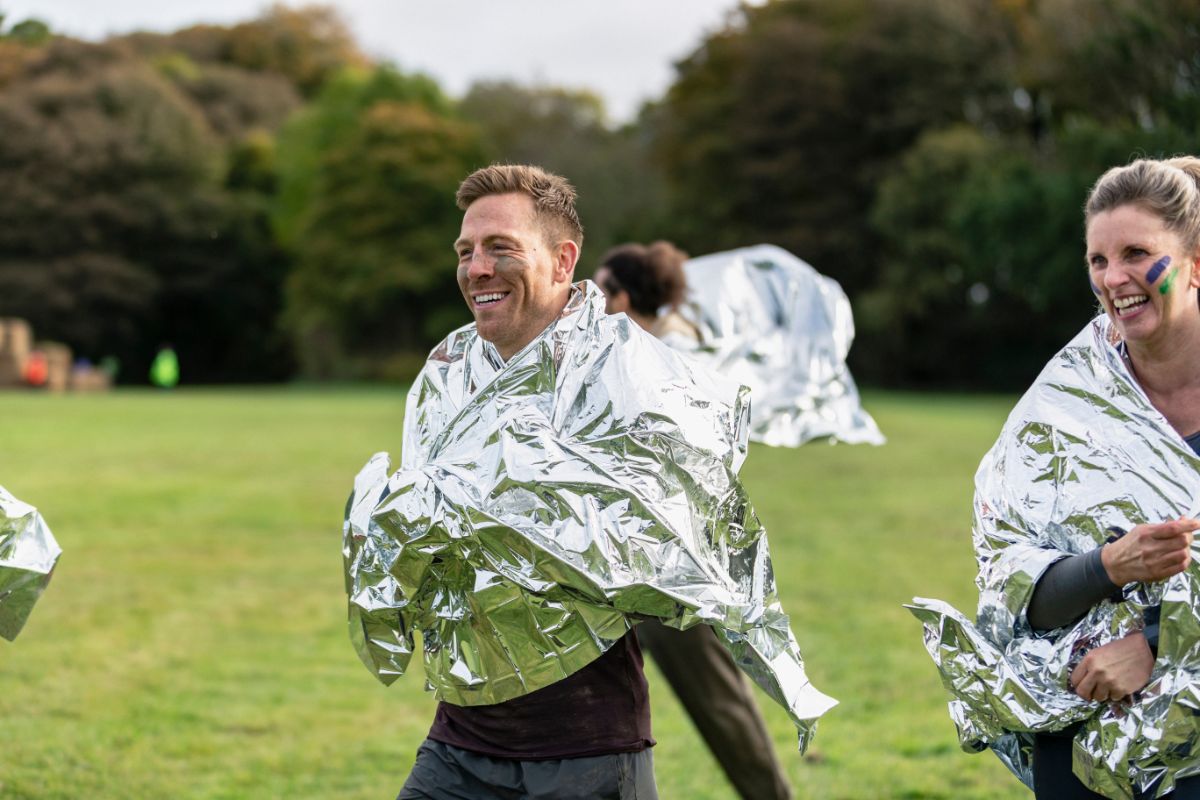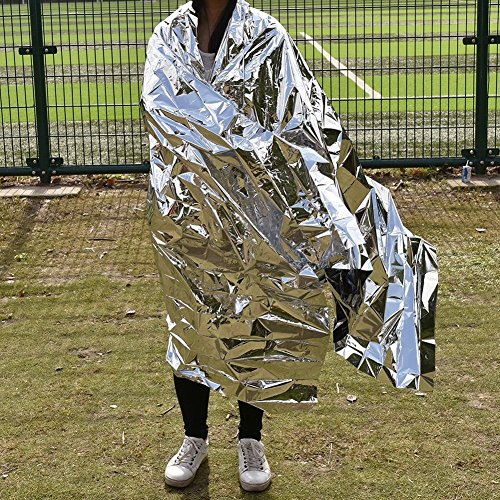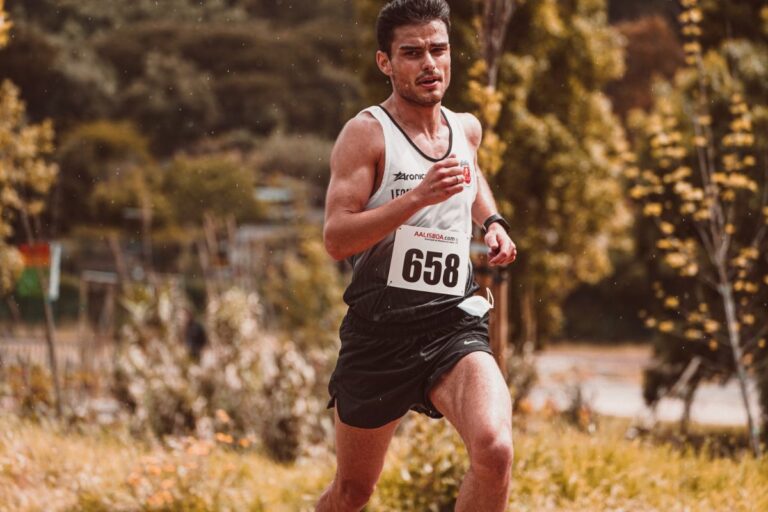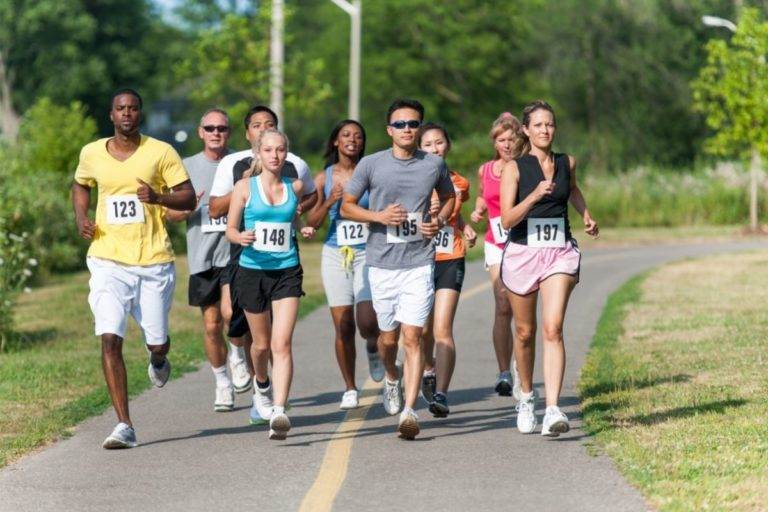Why Do Marathon Runners Wear Foil Blankets After The Race?

If you’ve ever watched a marathon, you might have noticed marathon runners wrapped in foil blankets after a race.
If you’ve just taken up running or are just a spectator of the sport, you might be wondering: Why do runners wear those silver blankets after a marathon?
- During a marathon, your body temperature rises.
- After you finish the race, you still shed heat. Your body is trying to get rid of that EXTRA heat (even if the weather is colder).
- Cold conditions could cause you to lose heat too quickly. Your body struggles to BALANCE getting rid of heat and keeping it in.
- Hypothermia can occur (a dangerous drop in body temperature).
- Foil blankets are used as a warmer for runners until they get their dry clothes.
In this article, we will cover some important information about runners, including why runners wear foil blankets after this 26.2-mile race.

Without further ado, let’s get into it.
Why Do Runners Wear Silver Blankets After The Race?
The reason runners wear foil blankets after a race is simple: It’s to retain your body heat.
- These thermal blankets are ideal for long-distance runners as they help to prevent hypothermia.
- They REFLECT body heat, allowing the runner to REGULATE their temperature as their body heat rapidly drops.
If you’re confused by this, let’s take a closer look at how this works.
Energy Turns to Heat
Your body temperature INCREASES as your muscles create energy.
During exercise, 80 percent of the total energy is converted to heat. The remaining 20% is used for muscle contraction.
Core Body Temperature Rises During the Race
As a result of the high aerobic demands of the marathon, the core body temperature continuously increases. For the body to function, lots of heat must be DISSIPATED.
- When starting a marathon, be well hydrated before the race.
- During the race, listen to your body and drink if you feel thirsty. Help your body sweat and cool down by staying well-hydrated.
- But drinking excess water will not help you stay cooler or run faster.
- Pouring water over your head is a common cooling strategy during marathons. Place ice cubes under the hat or in clothing if there are any.
After Running, Heat Dissipation Continues
After a runner finishes their race, their internal sensors inform their bodies to keep losing heat.
Additionally, when external temperatures are colder, runners will lose body heat RAPIDLY due to the fact that their head, arms, and legs are all exposed.
Cold conditions can increase the risk of losing too much heat and becoming hypothermic as a result of this.
The Foil Blanket Prevents Excessive Heat Loss
Foil blankets are therefore employed to MINIMIZE the risk of hypothermia by reflecting body heat.
These heat sheets are designed to enable runners to cool down gradually, as opposed to too quickly, until they can get changed into DRY clothes and replenish their fluids.
While they’re not necessary for every single race, they can be hugely beneficial to have on hand in order to help runners avoid becoming hypothermic.

Is It Common for Marathon Races to Hand Out Foil Blankets?
Heat sheets can help prevent post-race chilliness but aren’t available at all marathons.
Some events may provide a heat sheet in cooler temperatures, but not all.
Usually, they are found in bigger marathons, including the famous Boston marathon and Chicago Marathon. They are often filled with advertisements.
Read more: Guide on how to make Chicago marathon your best race.
In many races, they aren’t provided because the weather is HOT anyway. Small races may not be able to afford it.
They are sometimes handed out before the race, sometimes at the finish line.
To stay warm, wrap yourself in it before the start. You can also put it in a bag with your other belongings to wait for you at the end of the race.
If you need to use the blanket after the race, don’t toss it in the trash. Keep it!

What Are Some Other Uses of Foil Blankets?
You can use a foil blanket for many different purposes.
First aid kits or survival kits: They are easy to carry as they pack tiny.
Extreme weather conditions: They provide shade and protect you from the sun. They are wind- and waterproof.
Lost in the wilderness: The shiny surface can be used to signal your location.
Hiking and mountain biking: Having an emergency blanket in your backpack is a good idea. If misfortunes happen, it can protect you from hypothermia or rapid heat loss.
The Origin Of Space Blankets
Understanding why foil wrappers were invented is essential to understanding how they work.
- Thermal blankets were initially used at NASA as part of the Space Program, often referred to as space blankets.
- The heat shield of the Skylab Space Station broke in 1973. Temperatures inside the station reached 130°F.
- NASA was concerned that the food and equipment would perish if the situation persisted.
As a result, alongside another company, they came up with the idea to create a reflective metallic sheet.
WRAPPING the spacecraft in a space blanket deflected the sun’s heat, keeping the station cool.
What Should Runners Wear For A Race?

Now we’ve established why runners wear thermal blankets after a race, you might be wondering what they should wear during a race to control their body temperature!
It’s important to think carefully about what to wear before heading out on a long race, as you want to make sure that you’re as comfortable as possible.
For example, when the race begins in cold weather or early in the morning, many runners start the race with an additional layer and then shed it as they warm up.
Below are a few ideas on what runners should wear for a race.
Running Shorts and Tights
Running shorts and tights have their advantages and disadvantages.
Shorts made out of nylon are light and allow AIRFLOW, making them ideal for a race and to stay cool.
A great thing about loose shorts like this is that they provide freedom of movement, while also helping to minimize chafing when you’re racing.
If the weather takes a turn on the day or if you’re running in the winter, you might want to opt for running tights as opposed to just shorts.
Many people wear shorts over running tights to complete their outfits.
Vest Or T-shirt
Lots of runners tend to wear polypropylene vests and t-shirts.
This man-made fabric is LIGHTWEIGHT even when it becomes wet with sweat.
The great thing about it is that it wicks sweat away from the skin.
Long-Sleeve Tops
Depending on the weather where you’re racing, you might want to wear a long-sleeve top.
Many runners like to opt for polypropylene tops when they’re running, as they’re both comfortable and come in a variety of different thicknesses.
Socks
For the safest bet, opt for socks that are made with extra padding to provide extra cushioning as you run.
Toe socks are another option. They reduce friction between your toes by splaying your toes out. That prevents blisters on your toes.
Running Trainers
You can’t underestimate the importance of your running trainers.
To ensure you’re getting the right type of running shoes, make sure that you go in-store to try on a few different pairs.
The Bottom Line
Runners wear foil blankets to stay warm after a long race when the weather is cold (to avoid shivering)!
Runners typically avoid foil blankets during hot weather because they are afraid of overheating.






